First published November 2021 | Words and photos by Vietnam Coracle
This post was last updated 3 years ago. Please check the comments section for possible updates, or read more on my Updates & Accuracy page.
Inland Phu Quoc is a different world. The beaches that fringe the island have made Phu Quoc famous; but the island’s interior is seldom explored. Just a short distance from the coast, Phu Quoc’s inland valleys, hills and jungles are places of impressive natural beauty. In many ways, Phu Quoc’s interior is the final frontier for exploration on the island: its jungles hum with life, the thick canopy of old-growth trees whispers as gentle breezes blow in from the sea, and several refreshing streams run cool and clear off the high peaks along the spine of mountains that rise on the island’s eastern flank. Four of these springs – Suối Mơ, Suối Đá Bàn, Suối Tiên and Suối Tranh – are accessible by motorbike, connected to each other via a meandering loop on quiet, scenic back-roads. The springs are very pretty: falling over rocks, creating little waterfalls, and pools for bathing.
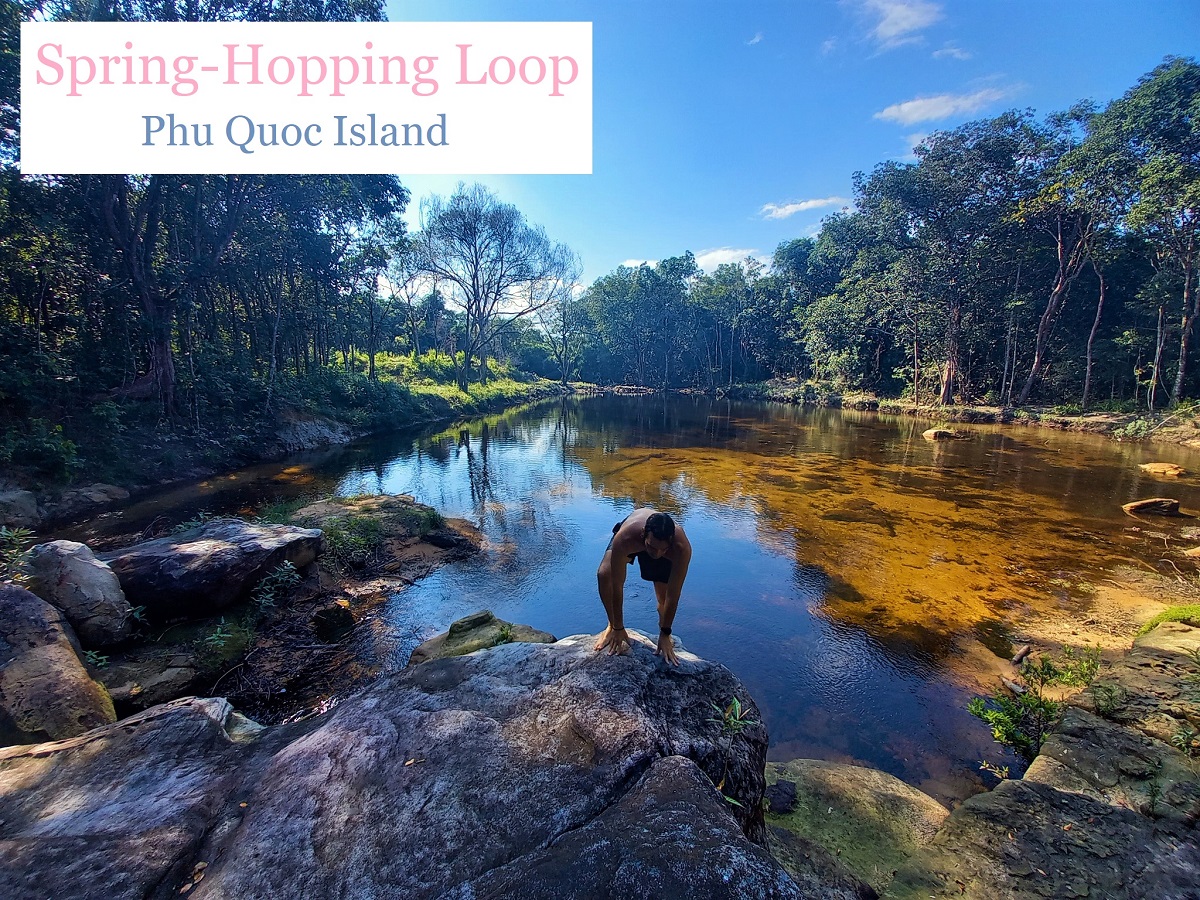
[Back Top]
GUIDE: SPRING-HOPPING LOOP, PHU QUOC
Exploring Four Freshwater Springs on Two Wheels
The Spring-Hopping Loop is intended as a day trip by motorbike (or bicycle), visiting each of the four springs via quiet, scenic back-roads. In this guide, I’ve included a route map as well as descriptions and photos of each spring. In keeping with the ‘inland’ theme, I’ve chosen to start and end this loop on the hill behind Duong Dong town, where several good cafes and bars overlook the island: try Chuồn Chuồn Bistro and Zyzu Kafe. Remember to bring your swim wear and pick up some picnic food to take with you: try Hữu Trí ‘donut’ shack, Hardy’s German Bakery or King Kong supermarket for supplies. Motorbikes can be rented from most accommodations for 100,000-200,000vnđ/day. All roads are paved (except one short section of dirt road) and the distance between each spring is no more than 10km. The springs look best in the rainy season: between May and November. I’ve written this guide going clockwise on the loop, but you can do it in either direction. You don’t have to visit all the springs in one day or in the order in which I’ve written this guide: each one can be visited on separate trips. It’s also possible to take taxis to/from any of the four springs. (Suối means ‘spring’ or ‘stream’.)

CONTENTS:
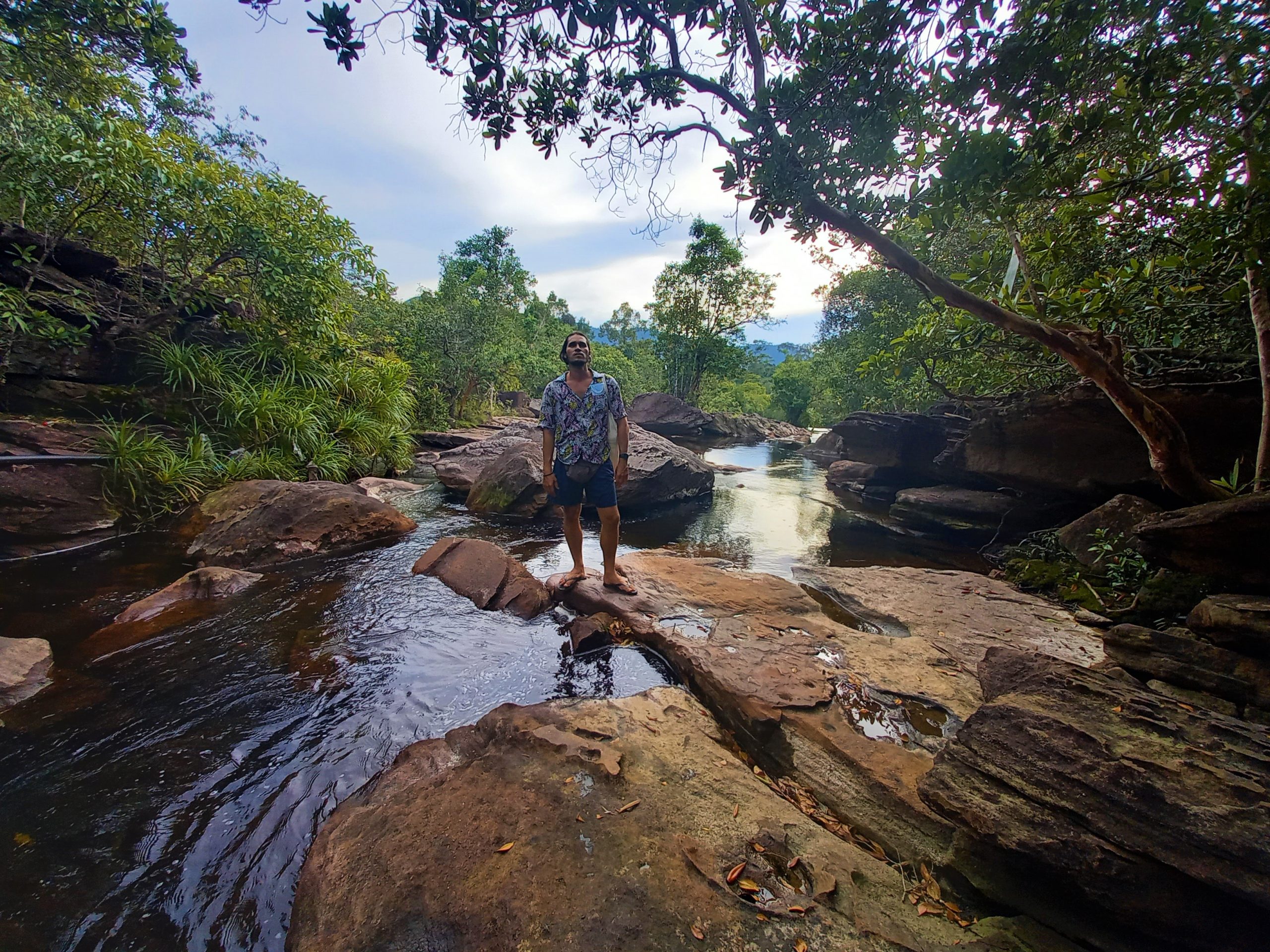
*Litter: These freshwater springs are beautiful. However, it is a sad reality at natural beauty spots all over Vietnam that many people do not dispose of their personal trash responsibly. Visitors should expect litter. But, in order to get away from the detritus, walk as far upstream as you can: eventually, the trash dissipates. In addition, set an example to others by disposing of your own trash responsibly. To avoid crowds, don’t visit the springs on weekends.
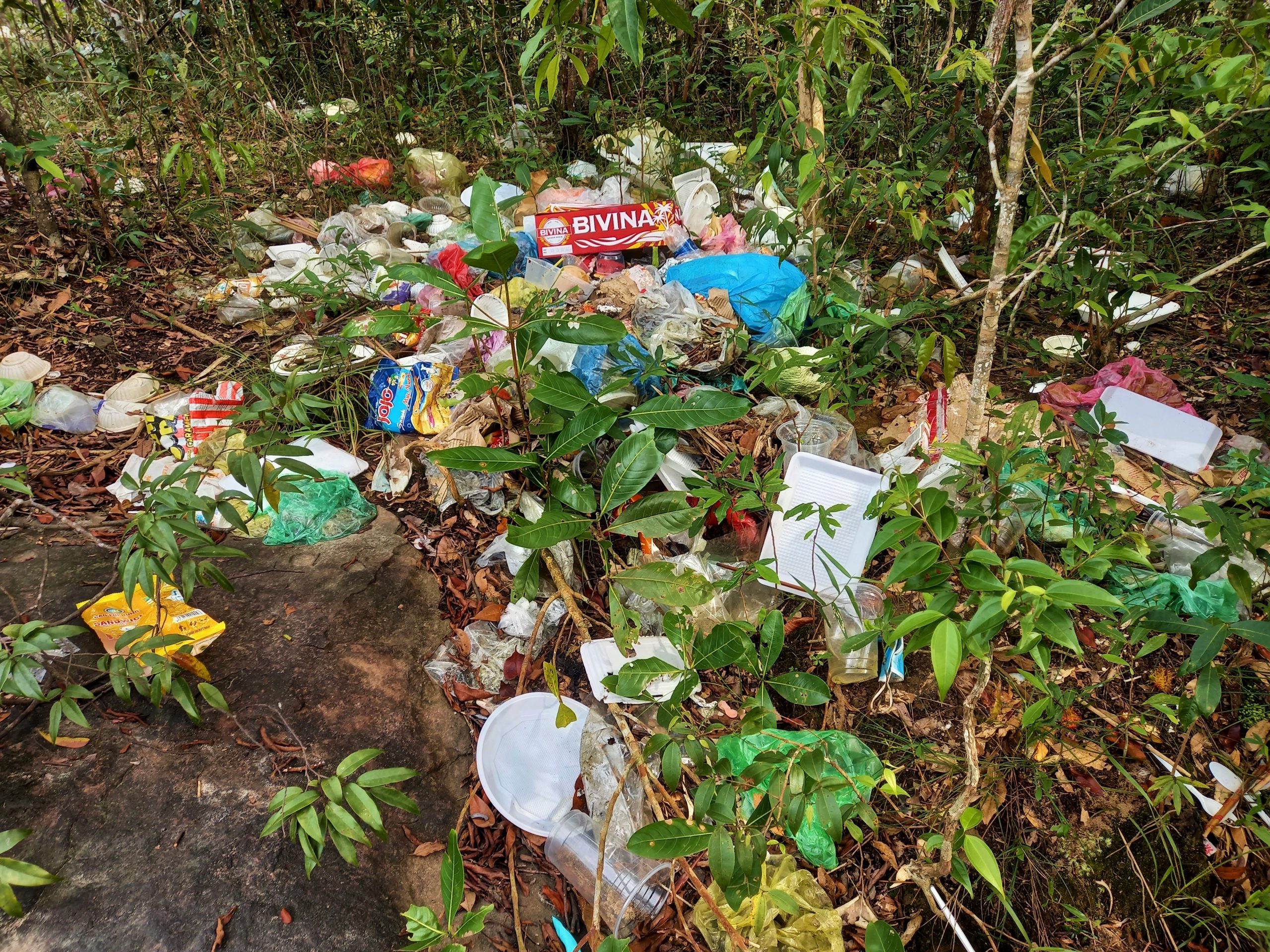
MAP:
Spring-Hopping Loop | Phu Quoc Island
View LARGER MAP
*Please Support My Site: I never receive payment for anything I write: all my content is free to read and independently financed. There’s no sponsored content whatsoever. If you like this guide, please consider making a donation or becoming a patron. Thank you, Tom
Suối Mơ Spring:
Name: Suối Mơ (‘Dream Spring’) | Open Hours: dawn to dusk | Price: free [MAP]
The most northerly and least developed of all the streams on the loop, Suối Mơ is deep in the jungles of Phu Quoc’s interior. At the time of research, Suối Mơ was the only stream not yet marked on maps. Finding it is half the fun. A paved lane leads through attractive farmland and orchards before dead-ending in the brush. From here, a sandy dirt path continues into the trees. Unless you want to go for a long (and pretty) hike through the jungle, make sure you take the right fork on the pathway, heading due southeast. It’s just a 10-minute walk before you start to hear and feel the presence of Suối Mơ down in the gully. Smaller paths lead through the jungle to the water, from where you can boulder-hop upstream as far as you like, before finding a nice spot to settle down and bathe. (Check the marker on my map, and switch to satellite view to see the pathways leading towards the gully.)

There’s no infrastructure for visitors at all. On the one hand, this is good because the stream feels remote and in its natural state; on the other hand, this is bad because there’s no one to maintain the area (i.e., no one to clean up all the trash that picnickers don’t bother to collect themselves). However, just follow the ‘golden rule’ and hike further upstream until the trash disappears. All locals know about Suối Mơ, but few visitors do. It’s such a pretty spot that I’m sure it won’t be long until it receives more attention.


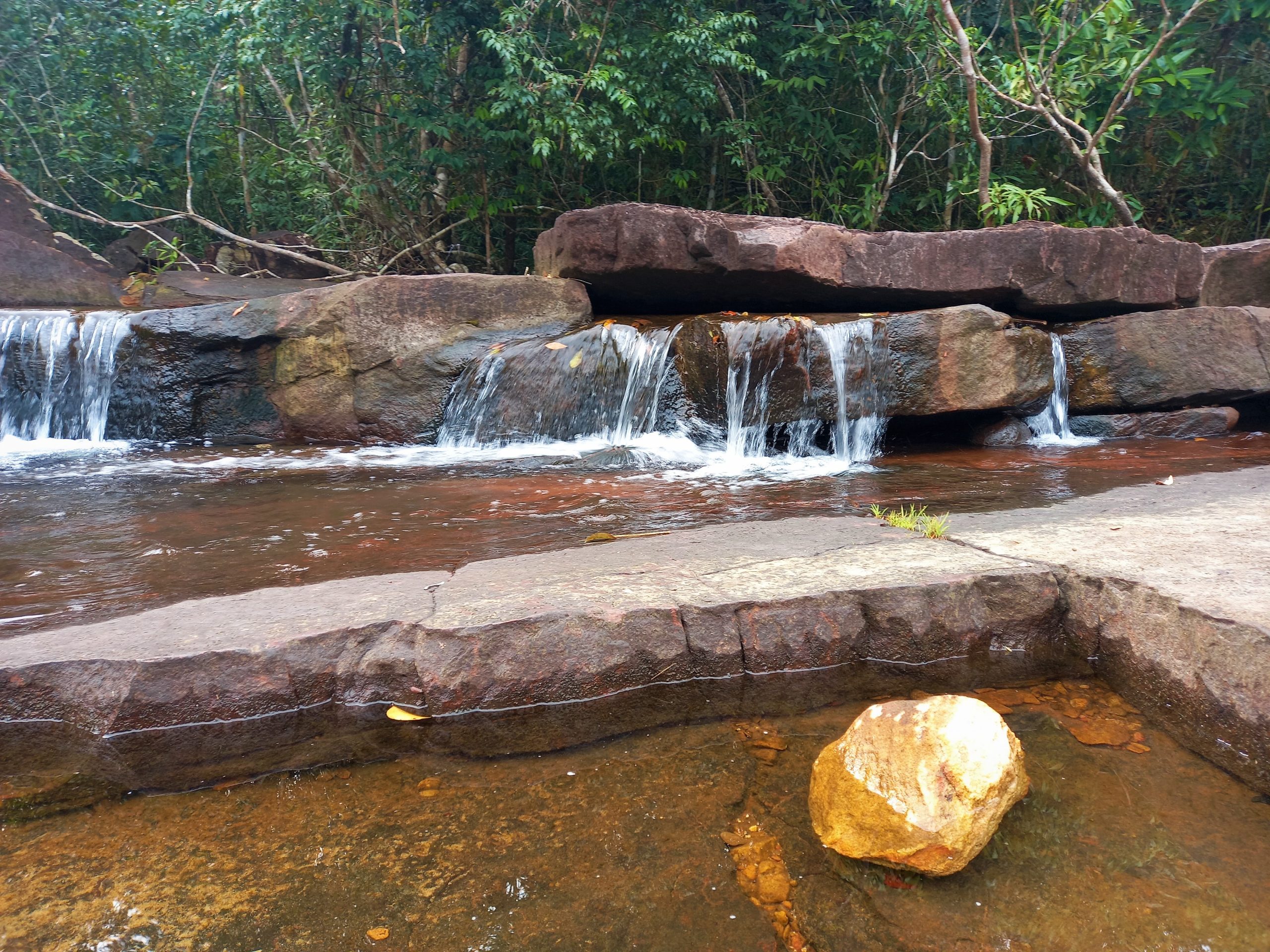


Suối Đá Bàn Spring:
Name: Suối Đá Bàn (‘Stone Table Spring’) | Open Hours: dawn to dusk | Price: 10,000vnđ [MAP]
Just south of Duong Dong Lake, Suối Đá Bàn is the second most popular and developed spring on the island. It’s attractive, easy to get to and quite well-maintained. This is also the best spring for swimming, thanks to a large man-made pool at the bottom of the waterfall that’s been created to accommodate more visitors. So far, development has been quite light and tasteful: there’s a ticket kiosk, a restaurant, a couple of rickety wooden suspension bridges, and tented platforms on the rocks which can be rented for picnics. Litter is a problem, but there are signs everywhere urging visitors to dispose of their trash responsibly. In addition, the site is maintained by staff, who are charged with clearing garbage from the site.
Suối Đá Bàn means ‘stone table spring’ on account of its large, flat mini-plateau of rock over which the water runs, creating a natural playground for visitors. The spring can get very busy on weekends, when large groups come and thoroughly enjoy themselves. But, if you visit on a weekday in the middle of the day, you may get to experience Suối Đá Bàn without anyone else around. If so, this is a really lovely place to spend a couple of hours bathing under the waterfall, swimming in the pools, walking on the rocks and hanging out with friends. (You don’t have to enter the spring via the ticket kiosk; you can access it a bit further downstream by taking a path down via a grassy football field.)

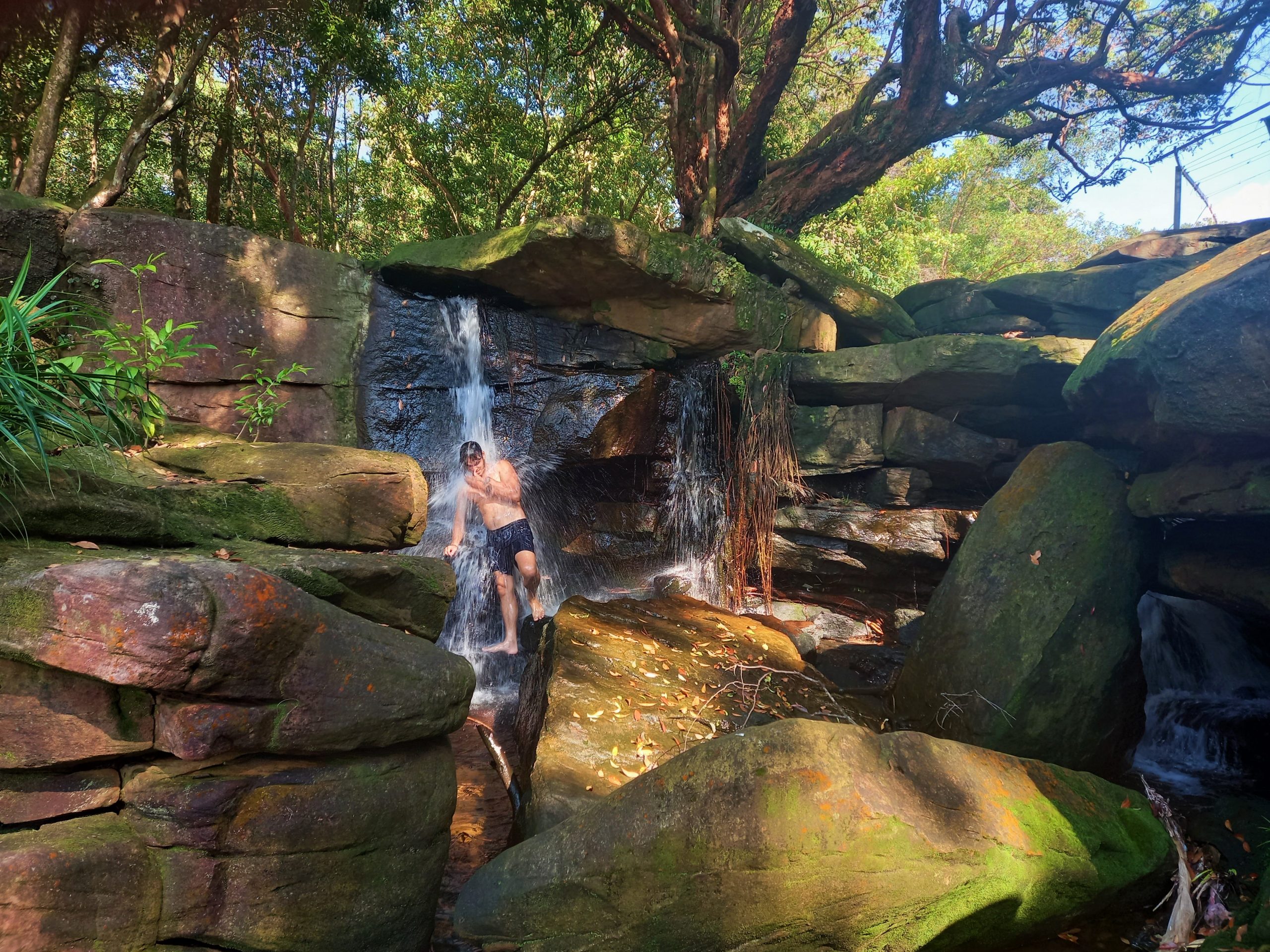


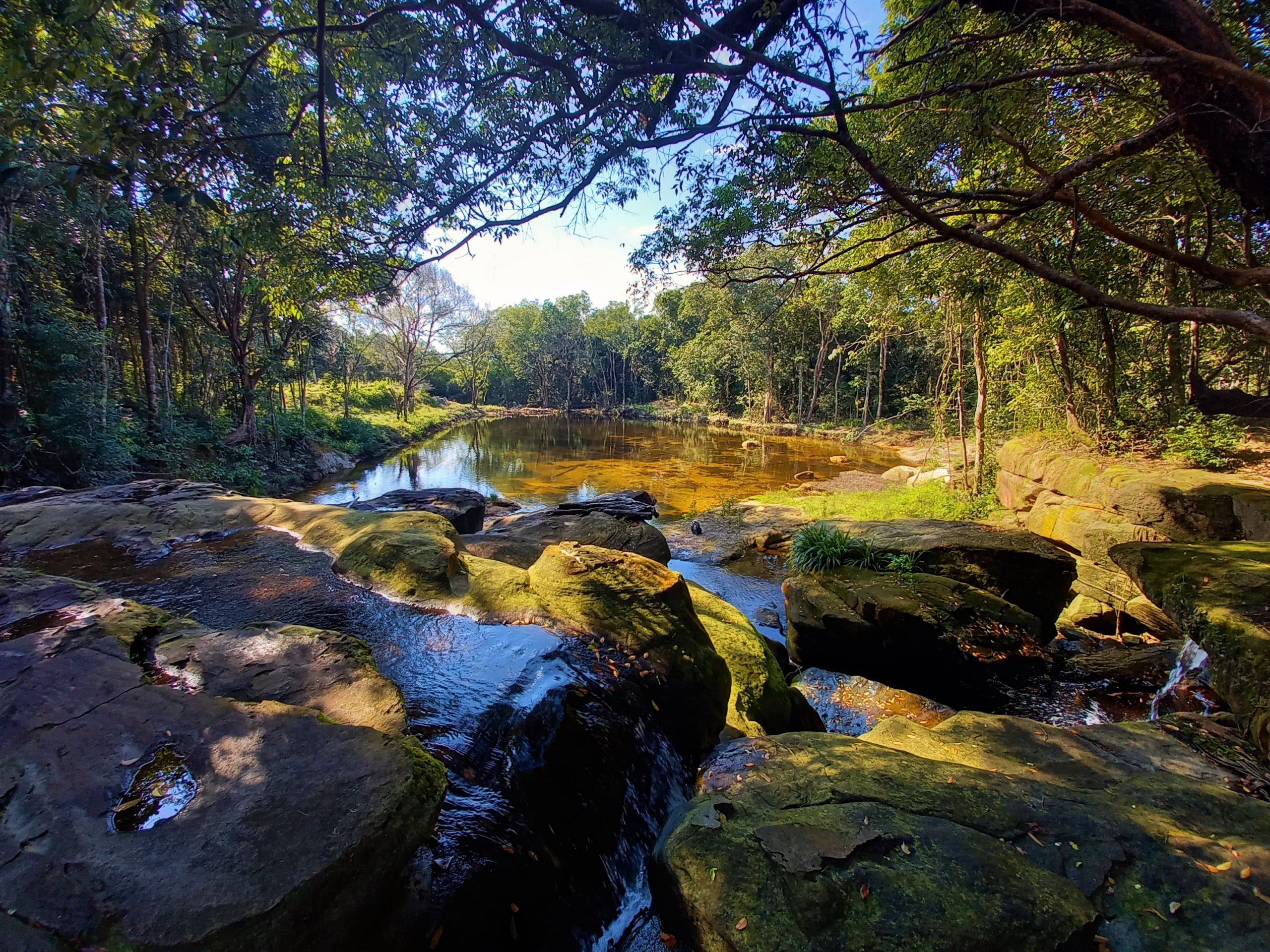
Suối Tiên Spring:
Name: Suối Tiên (‘Fairy Spring’) | Open Hours: dawn to dusk | Price: 10,000-20,000vnđ [MAP]
Up in the lush hills behind the serene east coast, Suối Tiên is the prettiest and most atmospheric of all the springs. Reached via scenic backroads through dense jungle, the entrance is a local farmhouse where the family charge a fee for parking (foreigners tend to be charged more than Vietnamese, but it’s no big deal). A pathway leads through the trees to the spring (it’s about a 10-minute walk). Until recently, Suối Tiên was only visited by locals; now, it’s well-known among domestic travellers, too. Try to avoid weekends, when it gets quite busy. A surge in popularity and little maintenance means that, yes, trash is a huge problem. But don’t be put off by the mounds of garbage strewn over the rocks downstream: continue upstream, clambering over rocks and up waterfalls, until the litter dissipates and the pools are pristine and beautiful. Up here, you’ll find little watering holes perfect for bathing, and views over the jungle canopy. For maximum enjoyment, I’d recommend getting here around 2pm with a picnic and spending the rest of the afternoon as far up the spring as possible, watching the sun get lower over the jungle as the air cools, the colours get sharper and richer, and cicadas begin to own the soundscape.




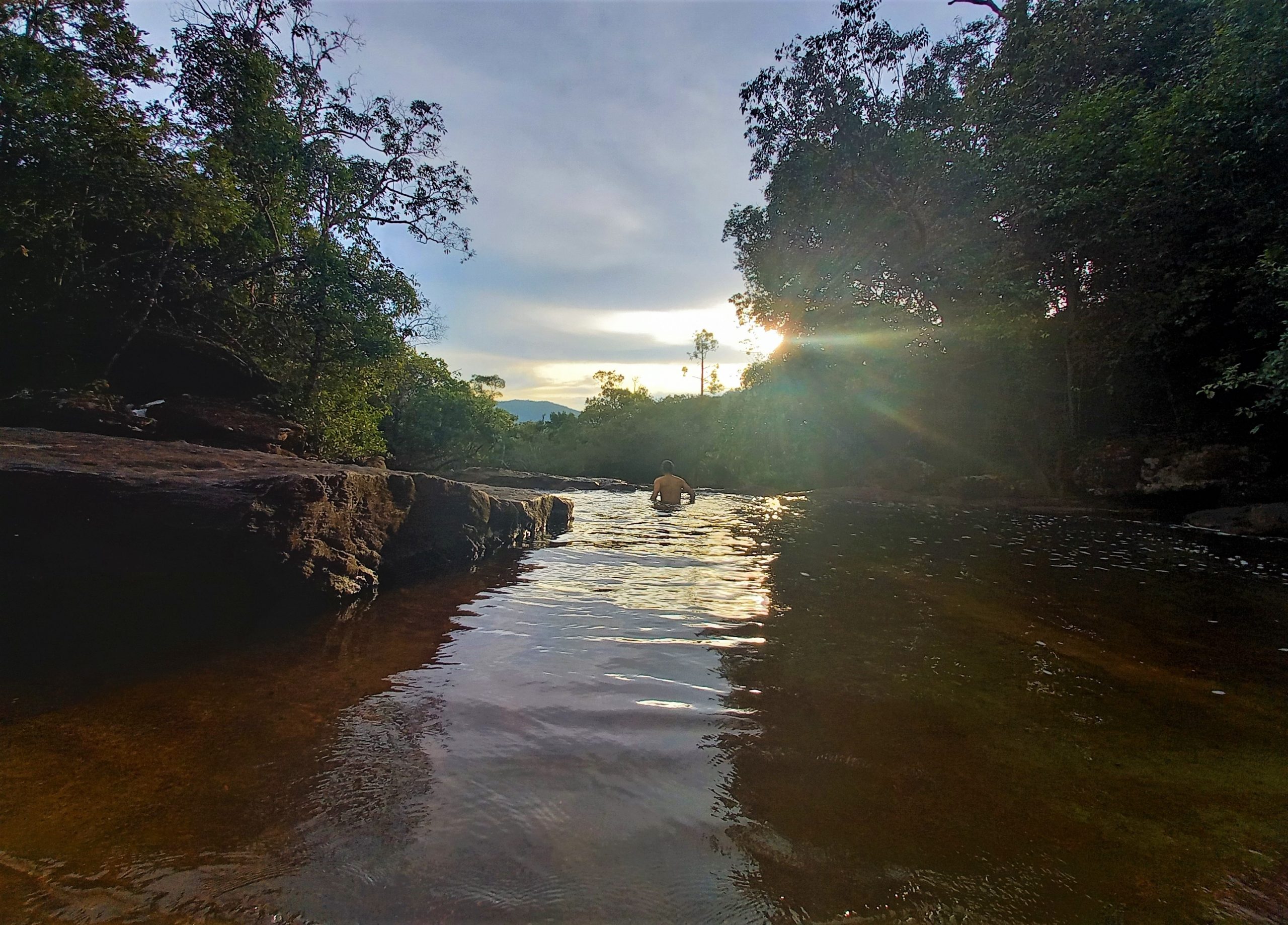
Suối Tranh Spring:
Name: Suối Tranh (‘Picture Spring’) | Open Hours: dawn to dusk | Price: 30,000vnđ [MAP]
The most southerly, touristy, developed and easily accessible of all the springs, Suối Tranh has been a regular stop on Phu Quoc itineraries for years. However, despite some rather tacky, kitsch and tasteless embellishments (think concrete tree trunks and statues of ‘ethnic minorities’), Suối Tranh is still very picturesque. Because of its popularity, timing is everything. In general, weekends are very busy, and even weekdays after 3pm can get crowded. The trick is to get here around noon on a weekday, when things are much quieter. (Indeed, during the pandemic, visitor numbers have been much lower). Suối Tranh is an established tourist site with trash cans and regular garbage collections. Even so, the same rule applies: the further upstream you go, the fewer the people and the less litter there is. Suối Tranh is wider and bigger than the other springs on this loop.


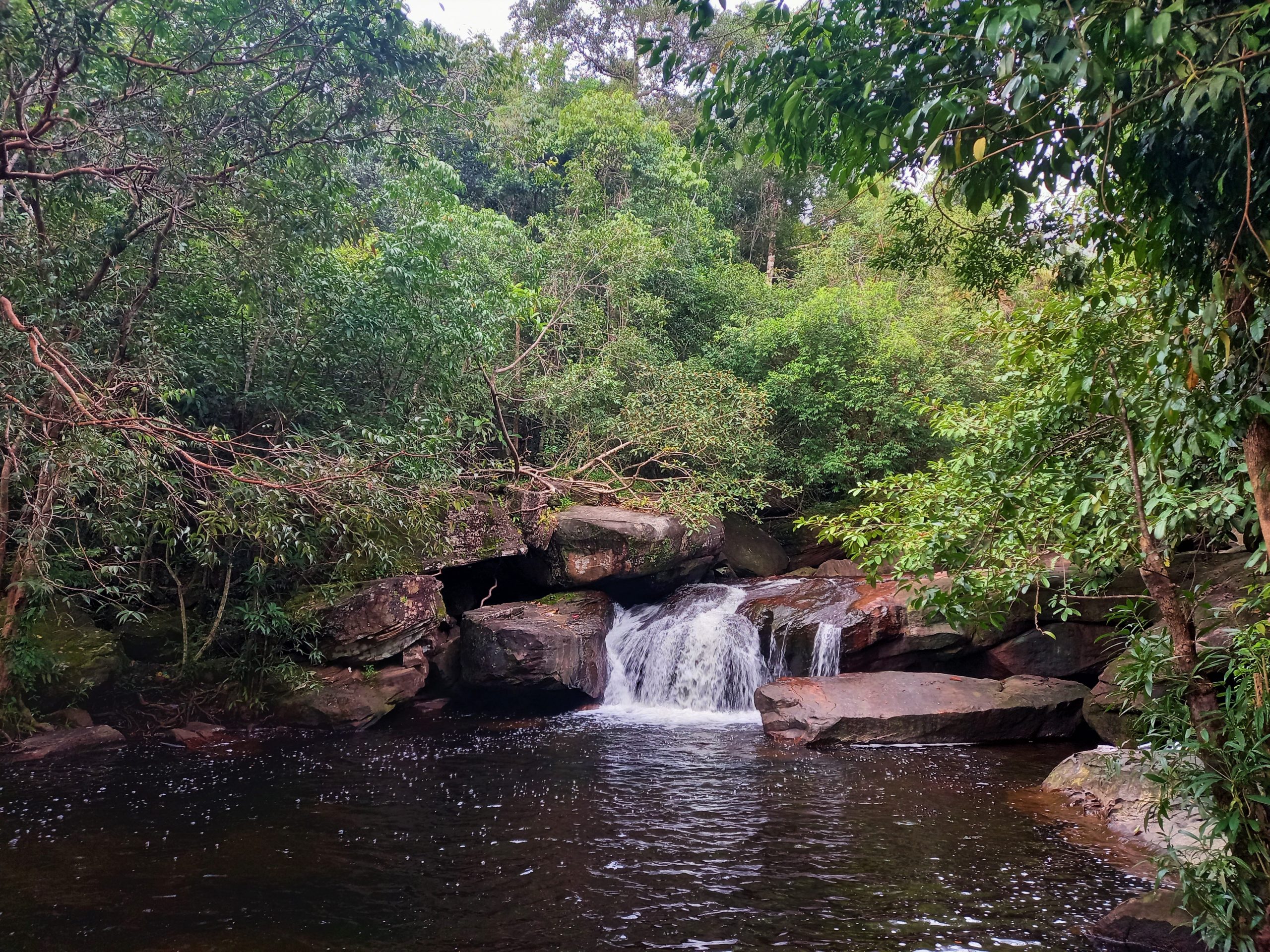

*Disclosure: I never receive payment for anything I write: my content is always free and independent. I’ve written this guide because I want to: I like these springs and I want my readers to know about them. For more details, see my Disclosure & Disclaimer statements and my About Page

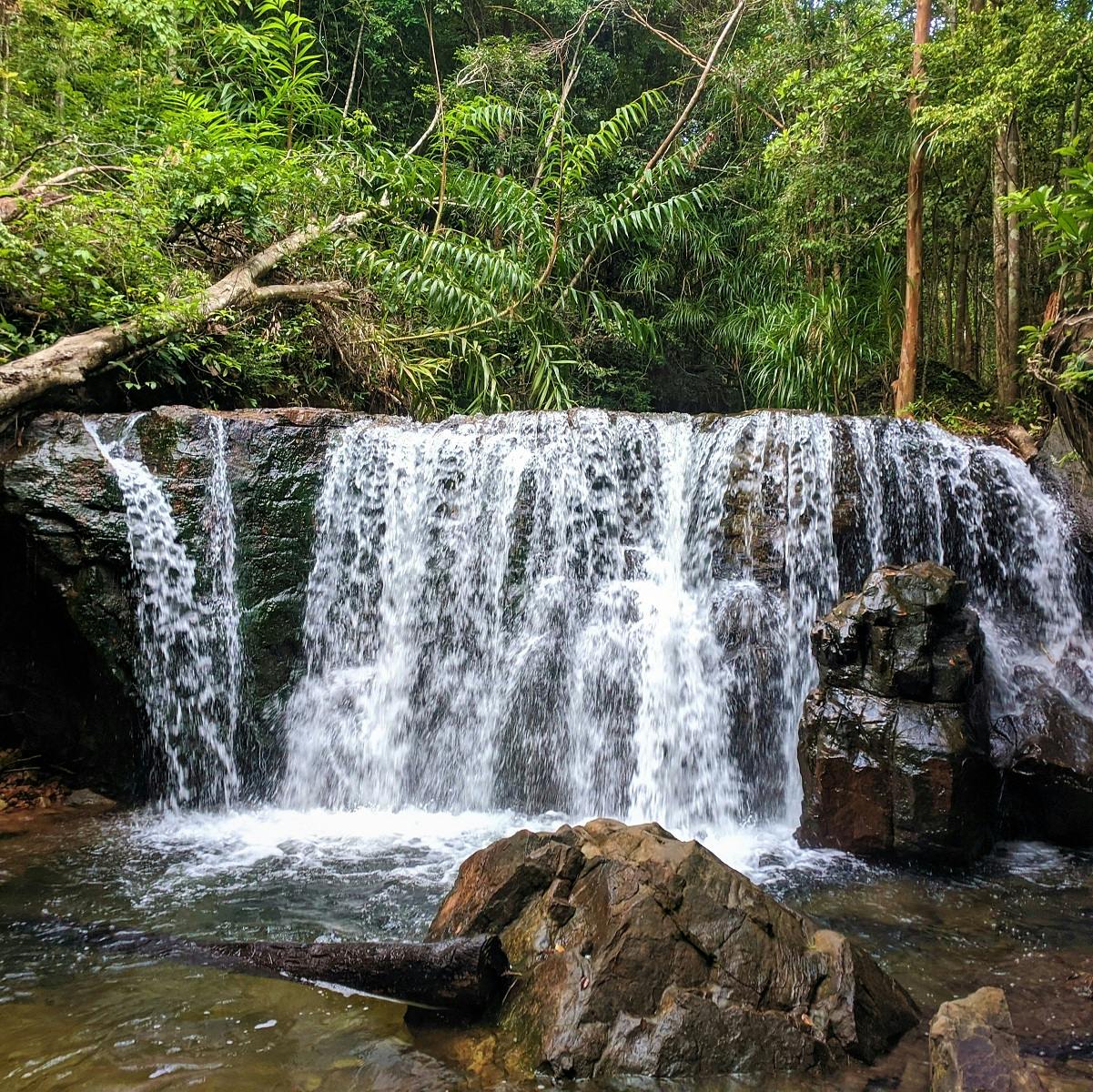
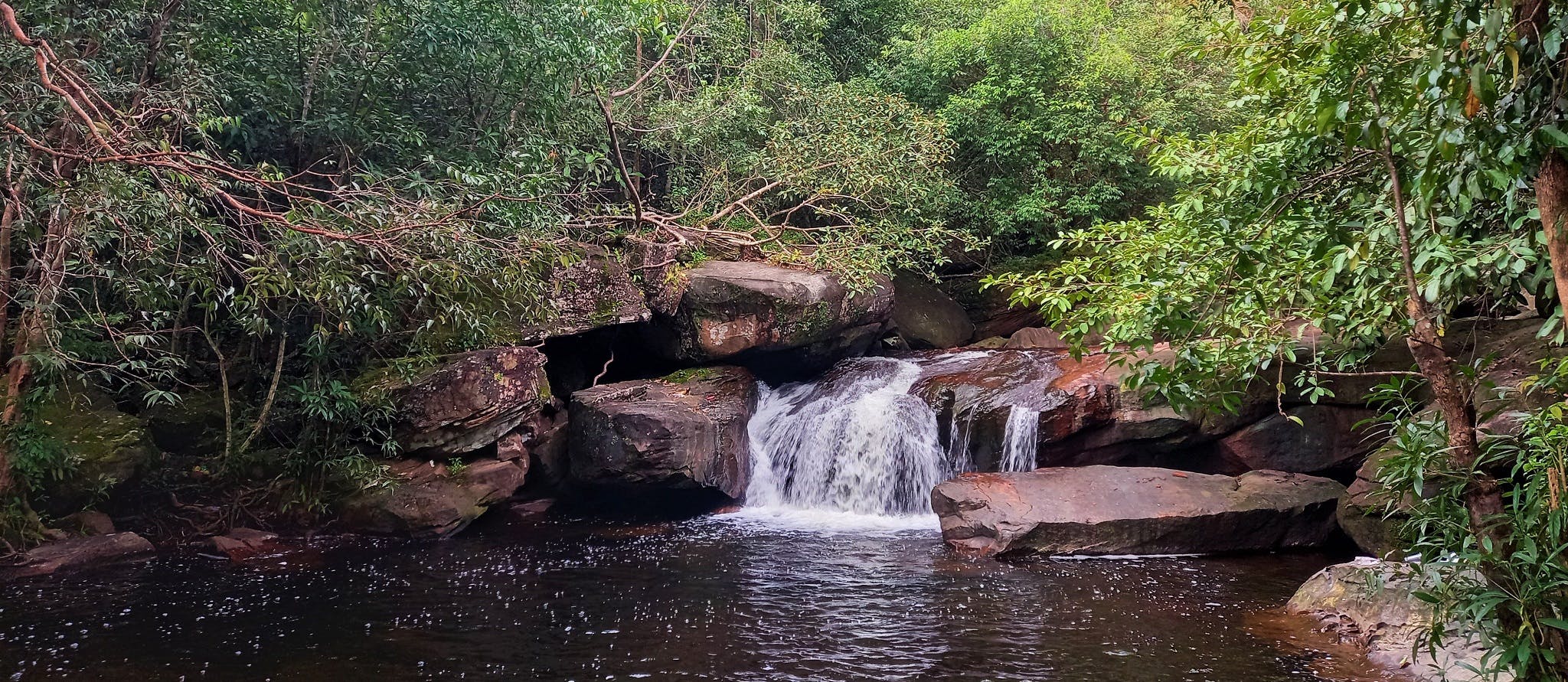

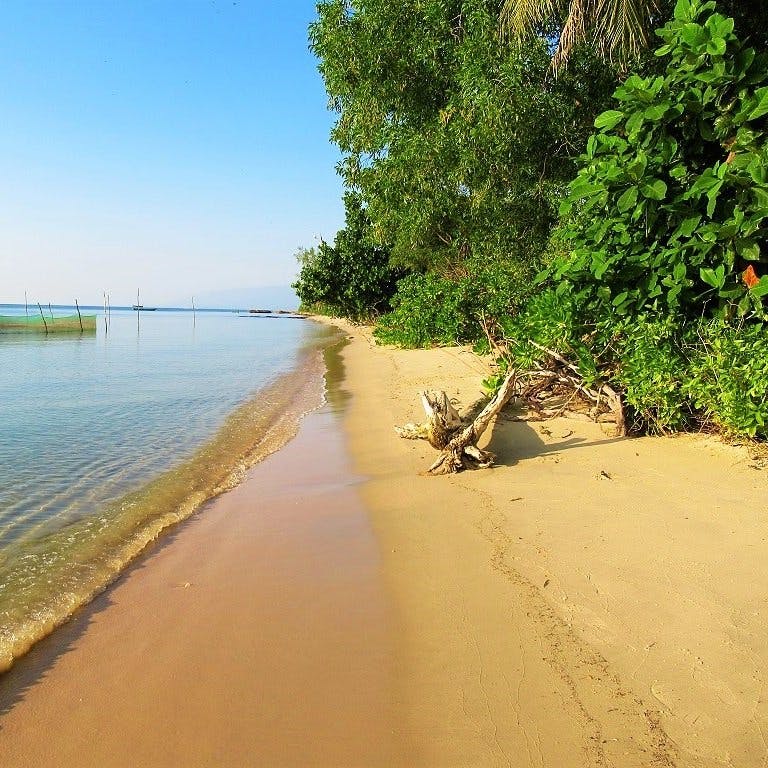



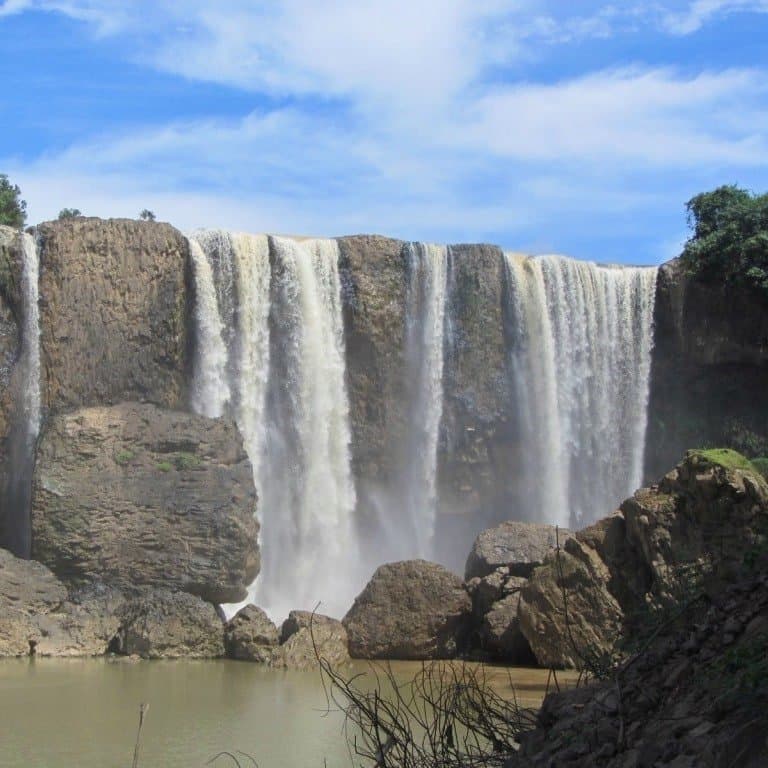
We went to suoi mo the other day and it was beautiful! Be aware that the right turn at the fork has now been blocked by a barbed wire fence. I think they’re developing/setting up for more pepper fields. You can go through the fence though and trek straight to the stream, but we didn’t realise this was the right turn referred to in the post, so our hike was a bit longer than 10 minutes!
Thanks so much for this amazing off-the-beaten-track recommendation!
Hi Jo,
Thanks for your comment. I’m glad you enjoyed Suối Mơ spring.
The barbed wire fence was there previously too, but when I walked along it for a while there was a gap that had been created where the path down to the stream began.
Best,
Tom